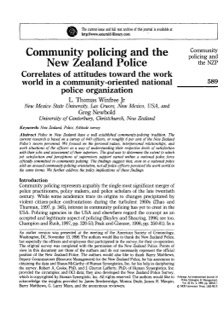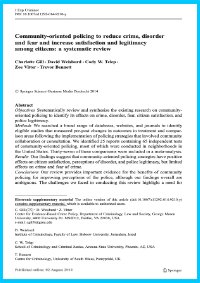By Kamena Dorling and Maddie Harris
Wethersfield airfield, a remote 800-acre site in rural Essex, is the latest location for a large ‘open-prison camp’ in which the government is housing people seeking asylum. Although not described as immigration detention, Wethersfield replicates many of the features found in detention settings, including restrictions on movement, security and surveillance measures, lack of privacy and isolation from the wider community. Opened in July 2023, the camp has already caused profound and irreparable harm to many residents, harm that only intensifies the longer they are kept there. The evidence in this report, drawn from 10 detailed assessments by Helen Bamber Foundation (HBF) clinicians and interviews with and ongoing support provided to 140 individuals by Humans for Rights Network (HFRN), makes clear that being held in Wethersfield is already causing significant harm to those placed there. This includes survivors of torture and trafficking, those with severe mental health issues, and children, despite Home Office guidance making clear that these groups should not be placed there. Residents have displayed symptoms of worsening mental health following transfer to Wethersfield, including low mood, loneliness, flashbacks, reduced appetite, weight loss, feelings of despair and difficulty sleeping, and a worsening in symptoms of Post-Traumatic Stress Disorder. Men held there have reported anxiety and depression, suicidal ideation, intense desperation and fear, self-harm and acute sleep deprivation. The very features of Wethersfield, and similar sites such as Napier Barracks, cause significant mental distress. These include: y Isolation: Wethersfield’s remote location and restricted access exacerbates feelings of detachment from society, while lack of adequate facilities heighten tensions in the site as more men are placed there. y Detention-like setting: The camp’s resemblance to a prison, with barbed wire and surveillance, triggers traumatic experiences among residents, many of whom have had experiences of other ‘camps’, in Egypt and Libya for example. y Lack of privacy and shared facilities: Overcrowded living conditions significantly impact residents’ mental health, and increase the risk of communicable diseases spreading. y Inadequate healthcare: Healthcare services are insufficient, with concerns about the lack of trauma-focused support and barriers to accessing care. The ‘screening process’ for deciding who should be placed in Wethersfield is fundamentally flawed. In just the first three months of it being open, nearly a quarter of those placed there were moved out again because they did not meet the ‘suitability criteria’. HFRN has identified 11 children wrongly treated as adults and placed at serious risk of harm there. With over 120,000 people who have been waiting for over six months for a decision on their asylum claim, it is unclear how long the men will be kept there and what is happening with their cases, contributing to an ongoing sense of uncertainty and anxiety. No legal advice surgeries are being provided by the government in Wethersfield, and charities offering support are being denied access. Not only does keeping people in open-prison camps like Wethersfield not allow for their recovery, it does the exact opposite. It causes additional pain and trauma to people who have already experienced conflict, oppression, abuse, torture and trafficking. The Home Office intends to extend the use of the site for a further three years – this report highlights Wethersfield airfield, a remote 800-acre site in rural Essex, is the latest location for a large ‘open-prison camp’ in which the government is housing people seeking asylum. Although not described as immigration detention, Wethersfield replicates many of the features found in detention settings, including restrictions on movement, security and surveillance measures, lack of privacy and isolation from the wider community. Opened in July 2023, the camp has already caused profound and irreparable harm to many residents, harm that only intensifies the longer they are kept there. The evidence in this report, drawn from 10 detailed assessments by Helen Bamber Foundation (HBF) clinicians and interviews with and ongoing support provided to 140 individuals by Humans for Rights Network (HFRN), makes clear that being held in Wethersfield is already causing significant harm to those placed there. This includes survivors of torture and trafficking, those with severe mental health issues, and children, despite Home Office guidance making clear that these groups should not be placed there. Residents have displayed symptoms of worsening mental health following transfer to Wethersfield, including low mood, loneliness, flashbacks, reduced appetite, weight loss, feelings of despair and difficulty sleeping, and a worsening in symptoms of Post-Traumatic Stress Disorder. Men held there have reported anxiety and depression, suicidal ideation, intense desperation and fear, self-harm and acute sleep deprivation. The very features of Wethersfield, and similar sites such as Napier Barracks, cause significant mental distress. These include: y Isolation: Wethersfield’s remote location and restricted access exacerbates feelings of detachment from society, while lack of adequate facilities heighten tensions in the site as more men are placed there. y Detention-like setting: The camp’s resemblance to a prison, with barbed wire and surveillance, triggers traumatic experiences among residents, many of whom have had experiences of other ‘camps’, in Egypt and Libya for example. y Lack of privacy and shared facilities: Overcrowded living conditions significantly impact residents’ mental health, and increase the risk of communicable diseases spreading. y Inadequate healthcare: Healthcare services are insufficient, with concerns about the lack of trauma focused support and barriers to accessing care. The ‘screening process’ for deciding who should be placed in Wethersfield is fundamentally flawed. In just the first three months of it being open, nearly a quarter of those placed there were moved out again because they did not meet the ‘suitability criteria’. HFRN has identified 11 children wrongly treated as adults and placed at serious risk of harm there. With over 120,000 people who have been waiting for over six months for a decision on their asylum claim, it is unclear how long the men will be kept there and what is happening with their cases, contributing to an ongoing sense of uncertainty and anxiety. No legal advice surgeries are being provided by the government in Wethersfield, and charities offering support are being denied access. Not only does keeping people in open-prison camps like Wethersfield not allow for their recovery, it does the exact opposite. It causes additional pain and trauma to people who have already experienced conflict, oppression, abuse, torture and trafficking. The Home Office intends to extend the use of the site for a further three years – this report highlights why Wethersfield airfield, a remote 800-acre site in rural Essex, is the latest location for a large ‘open-prison camp’ in which the government is housing people seeking asylum. Although not described as immigration detention, Wethersfield replicates many of the features found in detention settings, including restrictions on movement, security and surveillance measures, lack of privacy and isolation from the wider community. Opened in July 2023, the camp has already caused profound and irreparable harm to many residents, harm that only intensifies the longer they are kept there. The evidence in this report, drawn from 10 detailed assessments by Helen Bamber Foundation (HBF) clinicians and interviews with and ongoing support provided to 140 individuals by Humans for Rights Network (HFRN), makes clear that being held in Wethersfield is already causing significant harm to those placed there. This includes survivors of torture and trafficking, those with severe mental health issues, and children, despite Home Office guidance making clear that these groups should not be placed there. Residents have displayed symptoms of worsening mental health following transfer to Wethersfield, including low mood, loneliness, flashbacks, reduced appetite, weight loss, feelings of despair and difficulty sleeping, and a worsening in symptoms of Post-Traumatic Stress Disorder. Men held there have reported anxiety and depression, suicidal ideation, intense desperation and fear, self-harm and acute sleep deprivation. The very features of Wethersfield, and similar sites such as Napier Barracks, cause significant mental distress. These include: y Isolation: Wethersfield’s remote location and restricted access exacerbates feelings of detachment from society, while lack of adequate facilities heighten tensions in the site as more men are placed there. y Detention-like setting: The camp’s resemblance to a prison, with barbed wire and surveillance, triggers traumatic experiences among residents, many of whom have had experiences of other ‘camps’, in Egypt and Libya for example. y Lack of privacy and shared facilities: Overcrowded living conditions significantly impact residents’ mental health, and increase the risk of communicable diseases spreading. y Inadequate healthcare: Healthcare services are insufficient, with concerns about the lack of traumafocused support and barriers to accessing care. The ‘screening process’ for deciding who should be placed in Wethersfield is fundamentally flawed. In just the first three months of it being open, nearly a quarter of those placed there were moved out again because they did not meet the ‘suitability criteria’. HFRN has identified 11 children wrongly treated as adults and placed at serious risk of harm there. With over 120,000 people who have been waiting for over six months for a decision on their asylum claim, it is unclear how long the men will be kept there and what is happening with their cases, contributing to an ongoing sense of uncertainty and anxiety. No legal advice surgeries are being provided by the government in Wethersfield, and charities offering support are being denied access. Not only does keeping people in open-prison camps like Wethersfield not allow for their recovery, it does the exact opposite. It causes additional pain and trauma to people who have already experienced conflict, oppression, abuse, torture and trafficking. The Home Office intends to extend the use of the site for a further three years – this report highlights why this must not happen and the Home Secretary should instead prioritise closing the site as a matter of urgency. why this must not happen and the Home Secretary should instead prioritise closing the site as a matter of urgency.
London: Helen Bamber Foundation and Human for Rights Network , 2023. 22p.





















